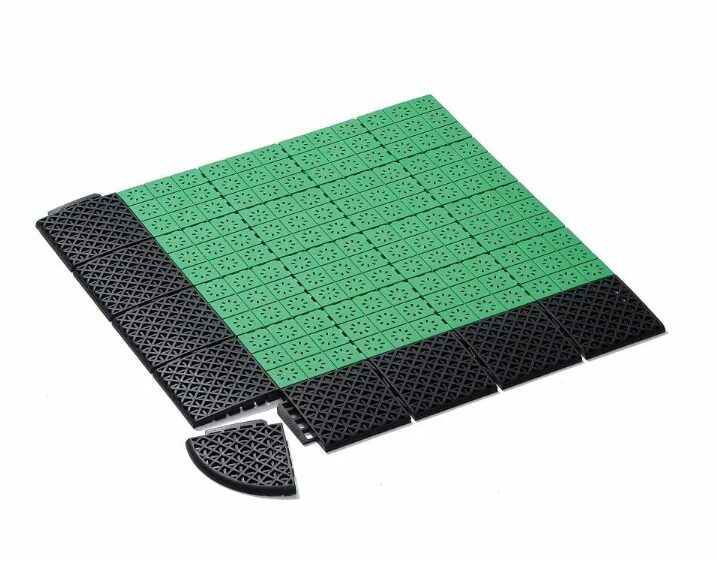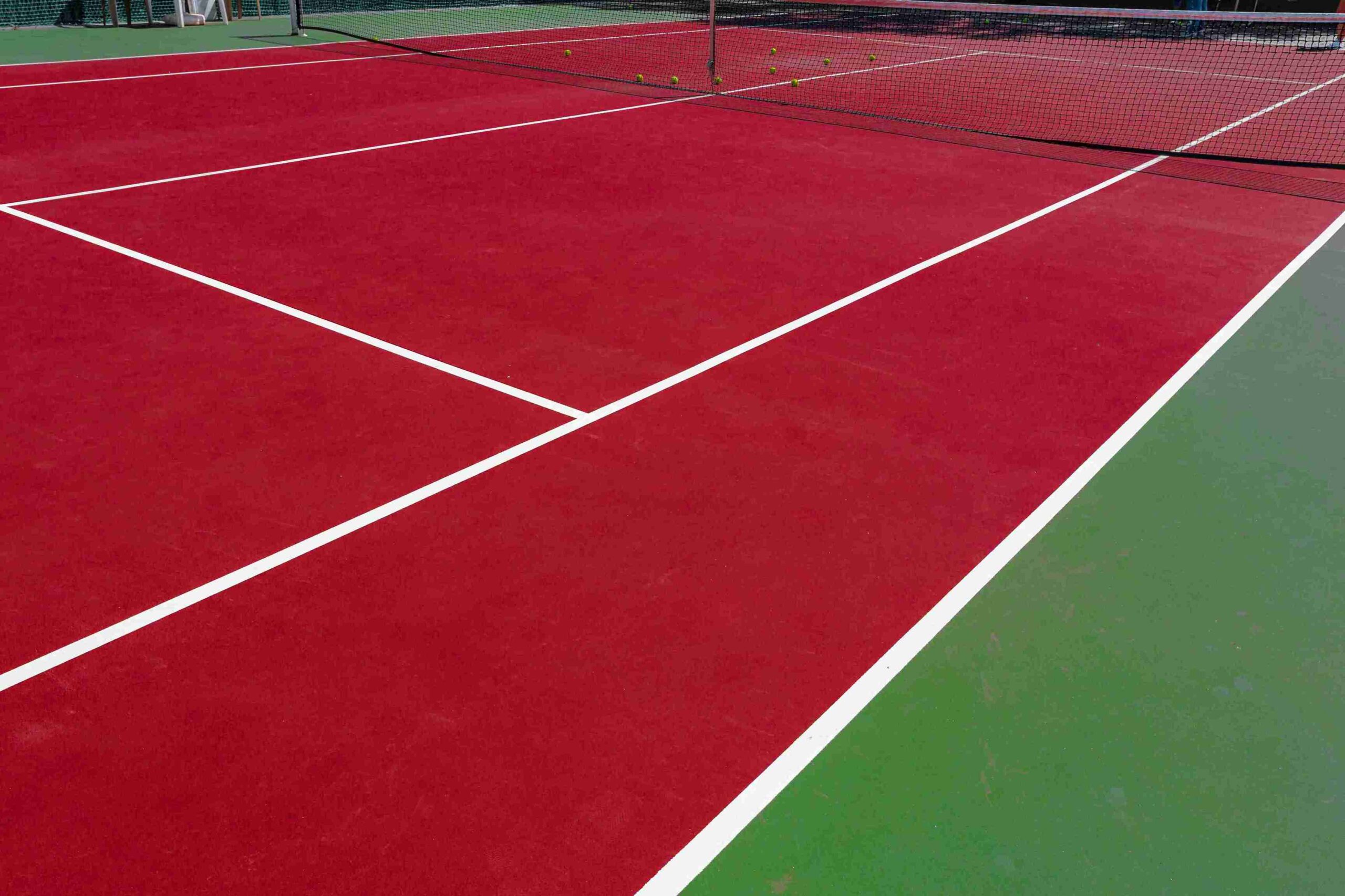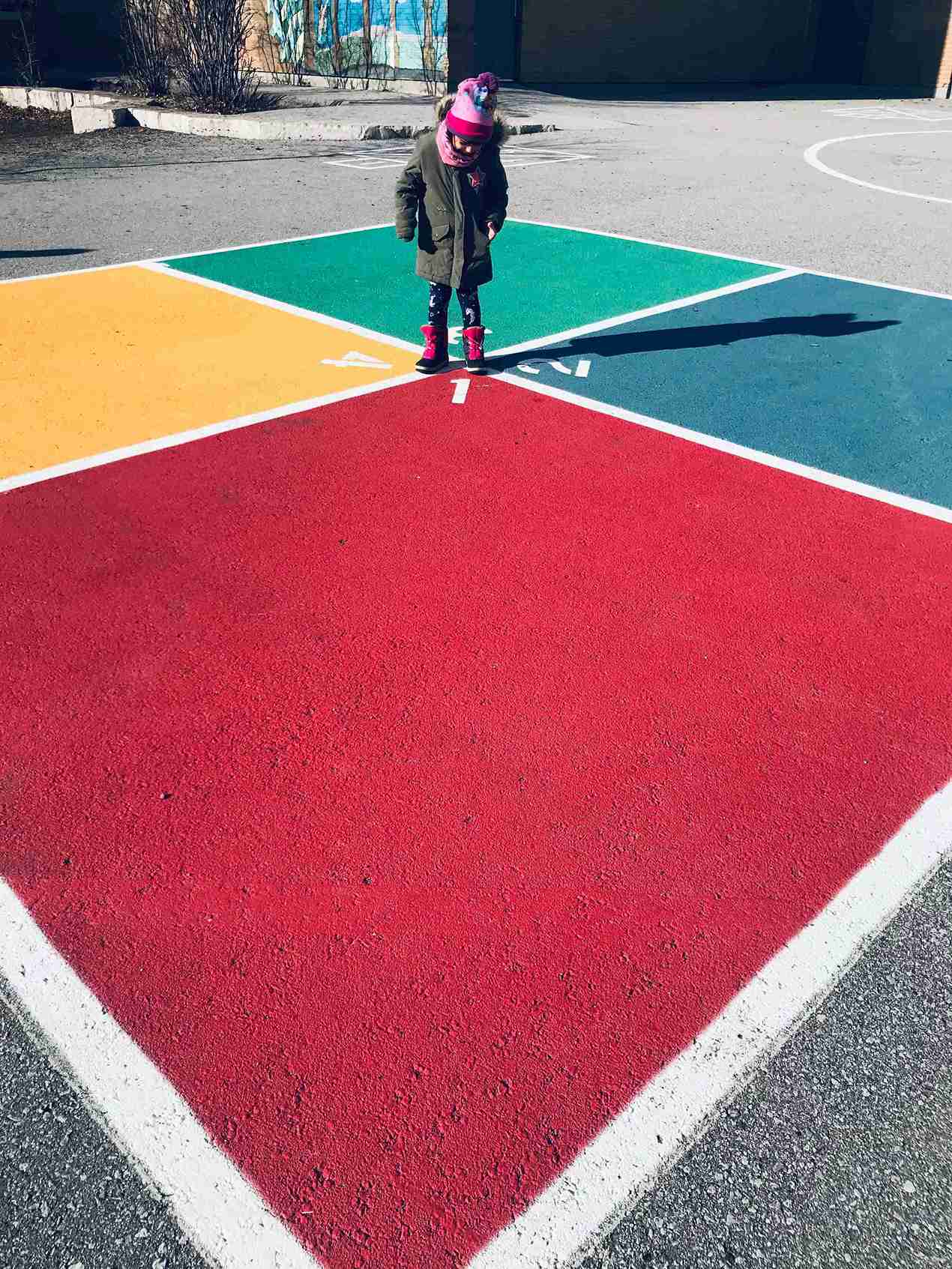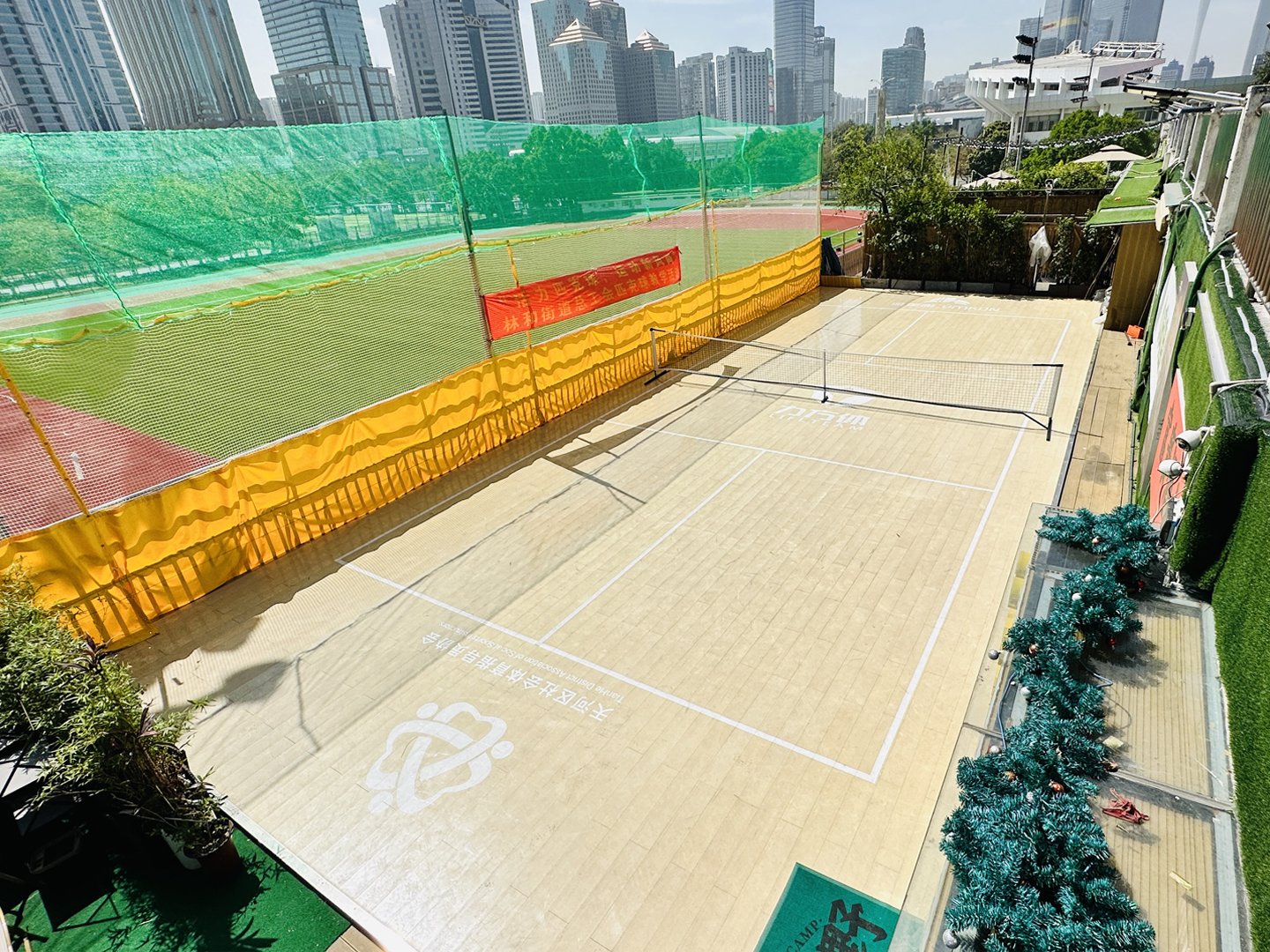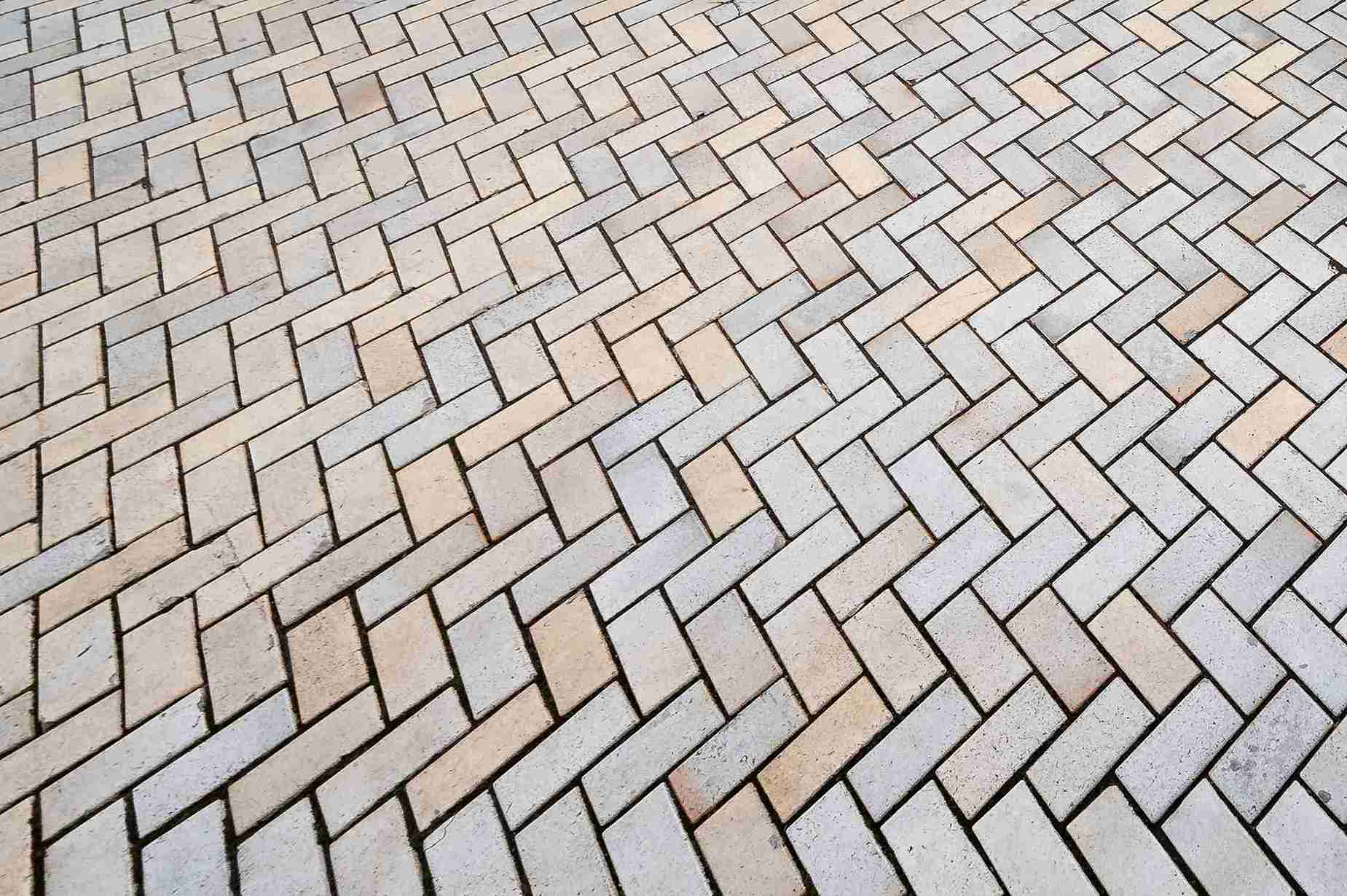Introduction
In sports and fitness centers, this floor plays a major role in the safety and performance of athletes. Injuries during training are common because the hard and slippery nature of the floors supports no absorption. Thermoplastic Elastomer TPE resilient sports flooring is a new invention to reduce such incidents.
TPE is a specially flexible and tough material that protects with its strong shock absorption and anti-slipping characteristics highly required in high-impact sports such as basketball and volleyball. This blog investigates how TPE flooring helps protect athletes by reducing stress on joints and muscles.
We will look at how TPE compares to other types of flooring for activities and why TPE is fast becoming an extremely popular choice for sports facilities worldwide, from gyms and schools to professional arenas. From a gym, school, or professional arena, TPE offers a safer environment for all athletes to participate and compete.


What is TPE Resilient Sports Flooring?
TPE is a particular type of material manufactured from a mixture of rubber and plastic, combining strength with elasticity. That would be, for example, the resilient sports flooring-TPE-meant to cushion athletes in various exercises, hence helping the human body sustain less stress in muscles and joints.
Unlike hard surfaces like concrete, which does not absorb the impact, TPE distributes the force evenly, offering other kinds of support during exercises, jumps, or falls. One of the most striking features of TPE flooring is its shock-absorbing properties. It reduces the impact of movement likely to cause injury, especially for sports involving jumping and quick direction changes, such as basketball or volleyball.
Other relevant advantages of TPE flooring concern anti-slippery conditions. The texture provides a firm grip for the athletes in high humidity or sweat conditions, preventing falls and skids. But beyond performance, the TPE floor is also ecologically friendly.
Most TPE products are manufactured from recyclable material, and because of that, they are far more viable than other options on or in sports facilities. This mix of safety, durability, and eco-friendliness ensures that TPE is an increasingly popular choice for professional and community-focused sports facilities.
How TPE Sports Flooring Reduces Workout-Related Injuries
Special properties make TPE resilient sports flooring safe for athletes by lowering the chances of acquiring workout injuries. Here are some of the specific ways in which TPE helps prevent injuries:
Shock Absorption for Joint Protection
One of the biggest advantages TPE flooring has is shock absorption. With jumping, running, or fast and pivoting direction changes, the legs, particularly the joints, take so much force in sports.
The TPE flooring performs by absorbing much of that force, which would have caused hits on knees, ankles, and hips. This protective mechanism helps classes of athletes avoid injuries like sprains, shin splints, and even painful joints from hard, unforgiving surfaces such as concrete and wood.
Enhanced Traction and Stability
Equally important are the features of traction and stability. Many sports and fitness activities involve quick changes in direction, for which the surface is slip-resistant.
Good traction prevents athletes from slipping or skidding due to such changes in direction that could lead to sprains, fractures, or worse. TPE resilient sports flooring maintains this grip even in wet or humid conditions; during fast games and workouts, it gives athletes confidence in their footing and stability.


Resilience for Long-Lasting Safety
Another important characteristic of TPE flooring is that it is resilient. The TPE materials can “bounce back” right after an impact; this means the floor will not wear down quickly, even with heavy use. Besides the fact that this quality will help keep the surface safe for a long period, it also prevents chronic injuries that develop over time from using harder, less flexible floors.
Comfort and Noise Reduction
Lastly, TPE flooring offers comfort and sound dampening to a certain degree. It will help build a more comfortable environment to focus on the game with great concentration. With less noise and a softer surface, stress would be minimal, thus helping clear their minds for such a game in competitive sports.
TPE resilient flooring has proved reliable for reducing injury risk and supporting athletic performance in many sports facilitiesby focusing on safety and comfort.
Comparison with Traditional Flooring Materials
However, regarding sports and fitness flooring, all materials are not equal. More traditional options in the marketplace include PP, PVC, wood, and concrete; these have various positive features but come with some negative features that increase the risk of injury to athletes.
Polypropylene (PP) and Polyvinyl Chloride (PVC)
PP and PVC have gained wide recognition for sporting flooring over the years. The PP floor is strong and requires less maintenance; hence, it has widely been used in highly trafficked facilities.
It is not flexible enough to absorb the shock properly, which may cause joint strain and other injuries in the long run. In high-impact sports such as basketball or volleyball, where an athlete has to jump and land down rapidly, the rigid nature of PP can increase the chance of joint problems.
Another traditional option is made of PVC, providing a smooth playing surface, but it tends to wear faster than TPE and can be made with chemicals that are harmful to the environment and human health. Compared to TPE, PVC is less flexible and less shock-absorbent; thus, it offers less protection for athletes against impact injuries. Poor slip resistance qualifies this material to be hazardous to use for fast and quick sports.
Wood and Concrete
Many gyms and older sports facilities have either wood or concrete flooring. Wood is the more realistic option in appearance but does not absorb shock as well, therefore being harder on the joints, running the risk of long-term injuries such as shin splints and joint pains. Concrete is durable but very rigid; hence, it is unsuitable for most athletic activities. Serious injuries may arise because of its inflexibility; the impact is not accommodated.


Advantages of TPE Over Traditional Flooring
Simultaneously, the TPE resilient sports flooring is safer and more flexible. Unlike rigid PP, PVC, wood, or concrete, the durability of TPE is combined with effective shock absorption: less impact on joints and muscles is reduced, creating a safer place during activities. Besides, the well-known high slip resistance makes it even safer, especially during intensive workouts.
Moreover, the TPE base tends to have an ecological make-up, including recyclable material, making facilities greener and long-lasting.
Benefits of TPE Flooring Beyond Injury Prevention
Besides, additional advantages of the high-quality TPE resilient sports flooring will make it excellent for sports facilities owing to the reduction of injuries.
Durability and Low Maintenance
The major plus of TPE flooring is its durability: for floors intended to face intensive work, even in years, the TPE floor will keep its shape and quality, which is vital for sports facilities with high traffic.
TPE resilient sports flooring remains strong and reliable, unlike wood, which can wear out and splinter, or PVC, which may crack or lose grip with time. Plus, it requires negligible maintenance, as a simple cleaning activity would most often suffice to keep it in good condition.
Eco-Friendly and Sustainable
Most TPE floors can be made from recyclable materials, making them more friendly to nature than other sports flooring types. Generally, TPE is safer for athletes and nature than PVC because it does not emit harmful chemicals throughout its lifespan. Eco-friendliness is also one of the factors that attracts facilities looking for sustainability in sports.
Customizable and Noise-Reducing
The TPE flooring surfaces can also be flexible in design, given the species of colors, logos, and textures one desires to go with; these are changeable to fit a school or sports center. This type of floor is also noted for noise reduction, allowing quietness indoors. Its noise-dampening aspect increases focus and comfort, providing an even better environment for the athletes and the audience.
Common Applications of TPE Resilient Sports Flooring
TPE resilient sports flooring is versatile and widely used in most athletic and recreational settings.


Indoor Sports Halls and Courts
TPE also cushions the impact in most sports halls and courts where athletes engage in high-impact sports such as volleyball and basketball, reducing injury occurrence. The games involve fast jumps, quick sprints, and fast turns, which the cushioning effect of the TPE floor protects the joints and muscles from strains.
Gymnasiums and Fitness Centers
The versatile TPE resilient sports flooring material would support the activities of weightlifting, aerobics, and cardio exercises in a gym space. Its toughness withstood heavy loads due to placing gym equipment on it, while there is a non-slip texture for promoting safety. A comfortable, slip-resistant surface also aids athletes in offering them a comfortable, slip-resistant platform that could minimize their fatigue during longer, more extended workout sessions.
Dance Studios and Aerobics Rooms
TPE flooring also works perfectly in dance studios and aerobics rooms, as frequent footwork and fast movements stress the muscles and make them more vulnerable to slipping. This slip resistance of TPE provides a great facility for dancers and health-conscious people to move more confidently, while its flexibility reduces the chances of impact-related injuries.
Playgrounds and Recreational Areas
TPE is durable and slip-resistant in recreational areas and playgrounds. The TPE floor provides a safe, cushioned surface for children and casual players to take part with minimal possibility of falls and grazes. That makes it suitable for both indoor and outdoor use since its resilient properties allow it to bear the weather conditions.
Conclusion
In a nutshell, TPE resilient sports flooring material presents an innovative solution, combining safety, durability, and sustainability for sports and fitness facilities. Its superior shock absorption reduces joint strain, while slip resistance prevents athletes from falling. Unlike traditional options, such as concrete or PVC, it offers longevity in performance without the high maintenance costs associated with it, hence being cost-effective over time.
TPE flooring installation has grown with increased recognition of the safety of athletes in gyms, indoor courts, and playgrounds, hence offering a better environment for workouts.
In a world where injury prevention is becoming increasingly recognized, TPE flooring represents a step toward a much safer and more supportive environment for any age group or skill in an athlete. By investing in TPE, sports facilities can protect their athletes, promote sustainability, and provide quality, durable flooring.


Call to Action
Ready to make your sports facility safer and more sustainable? Upgrade to VMKON’s TPE resilient sports flooring for unmatched durability, shock absorption, and injury prevention. Protect your athletes and invest in quality flooring that lasts. Contact VMKON today to learn more and get started!

